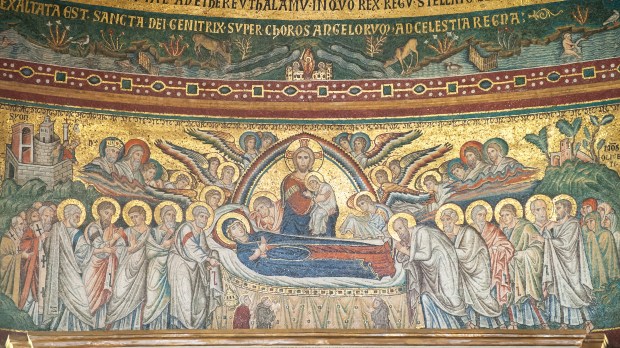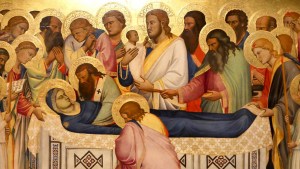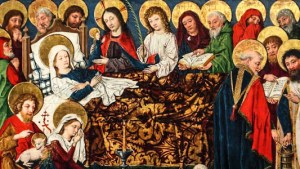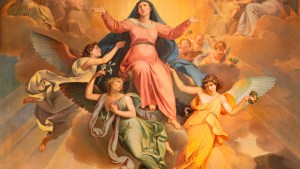While most Catholics are familiar with the “Assumption of Mary,” some don’t recognize or understand the term “Dormition of Mary.”
What does the Dormition of Mary mean?
When contemplating the mystery of the Virgin Mary’s departure from this world, many early Christians referred to it as the “Sleep of Mary,” or “Dormition of Mary” (from the Latin domire, meaning to sleep). In many areas, this highlighted the belief that Mary died before being assumed into heaven.
The Catechism of the Catholic Church explains how, “the Immaculate Virgin, preserved free from all stain of original sin, when the course of her earthly life was finished, was taken up body and soul into heavenly glory, and exalted by the Lord as Queen over all things, so that she might be the more fully conformed to her Son, the Lord of lords and conqueror of sin and death” (CCC 966).
St. John of Damascus, in the 8th century, relates how “St. Juvenal, Bishop of Jerusalem, at the Council of Chalcedon (451), made known … that Mary died in the presence of all the Apostles, but that her tomb, when opened, upon the request of St. Thomas, was found empty; wherefrom the Apostles concluded that the body was taken up to heaven.”
Pope Benedict XVI commented on this tradition in 2011 during an Angelus address on August 15.
In the East, it is still known today as the “Dormition of the Virgin.” An ancient mosaic in the Basilica of St. Mary Major, Rome, that was inspired precisely by the Eastern image of the “Dormitio,” portrays the Apostles, who, alerted by Angels of the end of the earthly life of the Mother of Jesus, gathered at the Virgin’s bedside.
Many Eastern Christians celebrate August 15 as the Feast of the Dormition of Our Most Holy Lady, the Theotokos and Ever-Virgin Mary.




